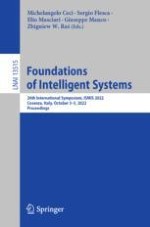2022 | OriginalPaper | Buchkapitel
Ensembling Sparse Autoencoders for Network Covert Channel Detection in IoT Ecosystems
verfasst von : Nunziato Cassavia, Luca Caviglione, Massimo Guarascio, Angelica Liguori, Marco Zuppelli
Erschienen in: Foundations of Intelligent Systems
Aktivieren Sie unsere intelligente Suche, um passende Fachinhalte oder Patente zu finden.
Wählen Sie Textabschnitte aus um mit Künstlicher Intelligenz passenden Patente zu finden. powered by
Markieren Sie Textabschnitte, um KI-gestützt weitere passende Inhalte zu finden. powered by
